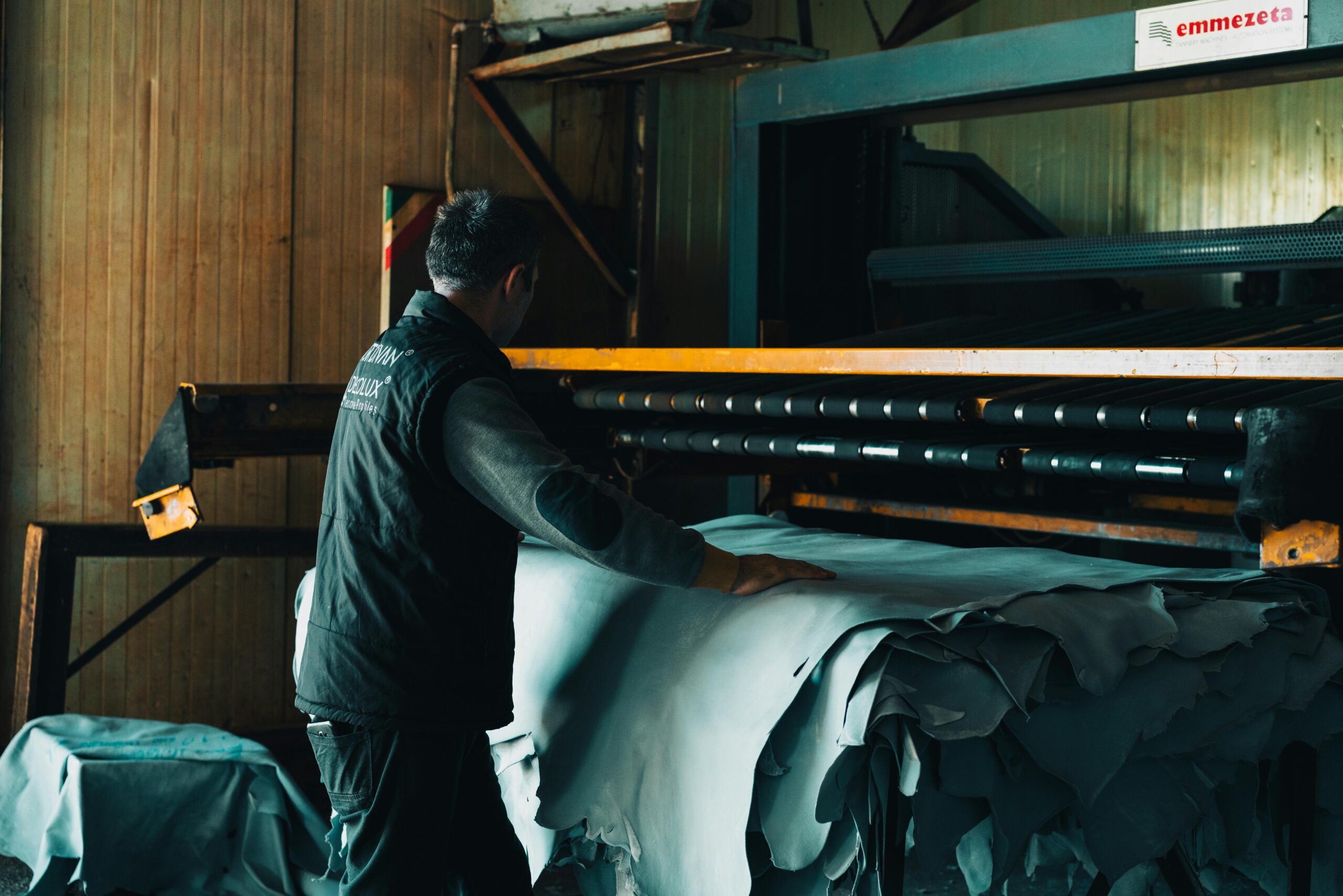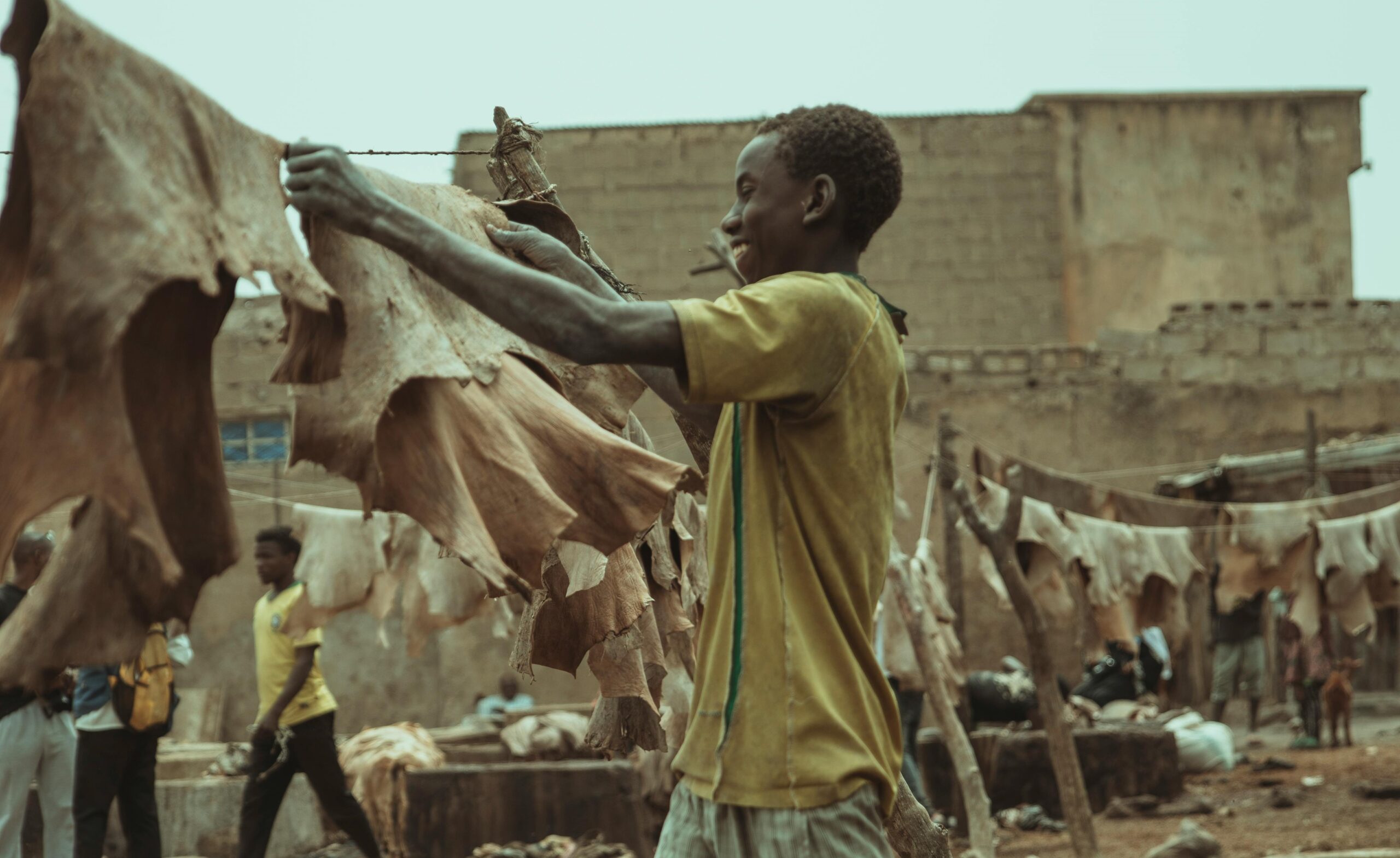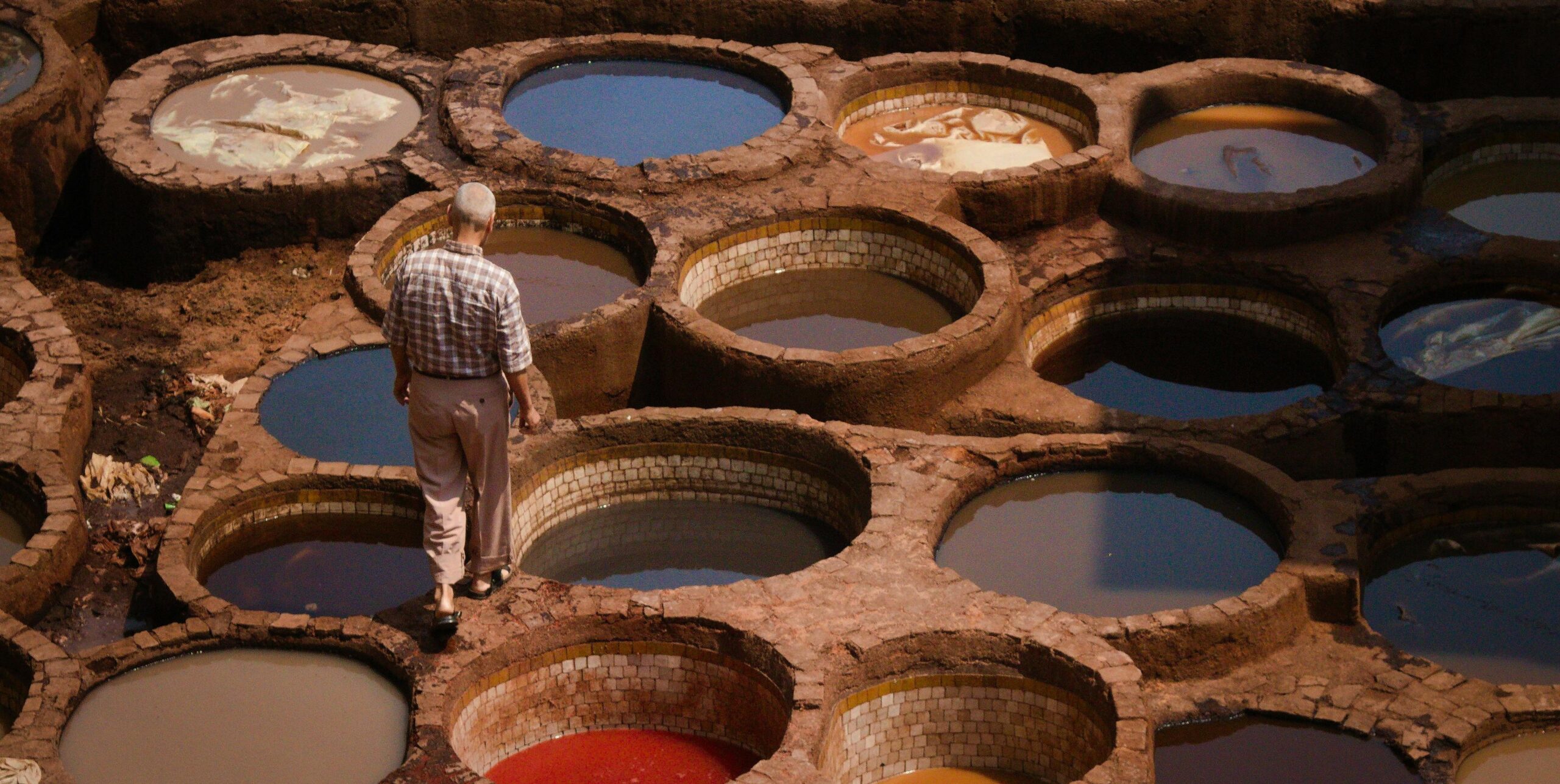
Blog
The stages of leather production

The production of leather is a complex and multi-stage process that involves transforming animal hides into a durable and aesthetically pleasing material. This process includes the collection of hides, tanning, drying, coloring, and final finishing. In this article, we will provide a comprehensive examination of each stage of leather production.
1. The Collection of Hides
The collection of hides is the first stage in the leather production process and includes several key steps:
1. Selection of Animals: Choosing the appropriate type of animal (such as cow, sheep, or goat) based on the quality and intended use of the leather.
2. Slaughtering: Conducting the slaughter in a hygienic and standard manner to preserve the quality of the hides.
3. Cleaning the Hides: Removing fat, flesh, and excess tissue from the surface of the hides and washing them to eliminate contaminants.
4. Temporary Storage: Storing the hides under suitable conditions (controlled temperature and humidity) to prevent spoilage.
5. Preparation for Tanning: Inspecting the quality of the hides and selecting suitable ones for the next stage.
These steps are carried out meticulously to ensure that the final quality of the leather is not compromised.
2. Tanning
Tanning is one of the key stages in leather production that transforms hides into a durable and resilient material. This stage includes two main methods: vegetable tanning and chemical tanning.
Vegetable Tanning
This method is one of the oldest and most sustainable tanning processes. In this approach, natural materials such as plant extracts, tree bark, and other botanical substances are used to tan the hides. This process is typically time-consuming and can take several weeks to complete.
Advantages of Vegetable Tanning:
– High Durability: Leather produced through vegetable tanning tends to be more durable.
– Environmental Compatibility: This method is less harmful to the environment due to the use of natural materials.
Chemical Tanning
In this method, chemical substances such as chromium are used to tan the hides. This approach is faster than vegetable tanning and usually takes only a few days.
Advantages of Chemical Tanning:
– Speed: The chemical tanning process is significantly quicker than the vegetable method.
– Variety in Color: This method aids in the production of colorful and diverse leathers.

3. Drying
After tanning, the hides must be dried. This stage involves the removal of excess moisture from the hides and can be performed using various methods:
Natural Drying
In this method, the hides are exposed to open air to dry naturally. This approach is typically time-consuming but helps maintain the quality of the hides.
Artificial Drying
In this method, drying machines are used to quickly reduce the moisture content of the hides. This approach is faster, but it may potentially damage the quality of the leather.
4. Coloring
Coloring is one of the important stages in leather production that gives the leather a beautiful and attractive appearance. This stage includes several methods:
Natural Dyeing
This method involves the use of natural dyes, such as plant-based colors. This type of coloring typically gives the leather a natural look and is generally less harmful to the environment.
Chemical Dyeing
In this method, chemical dyes are used that are quickly and easily absorbed by the leather. This type of coloring usually creates a wider variety of colors and makes the leather appear more vibrant.

5. Final Finishing
Surface Smoothing
In this stage, the surface of the leather is thoroughly smoothed to eliminate any irregularities and surface defects. This is typically done using specialized machines.
Coating
After smoothing, the leather may be coated with various materials, such as water-resistant substances or protective coatings. These coatings help increase the durability of the leather and protect it from environmental damage.
Cutting and Shaping
Finally, the leather is cut to the desired size and shape. This stage usually involves the production of final products such as bags, shoes, clothing, and upholstery.
6. Quality Testing
After the production process is completed, the leather must be evaluated for quality. This testing includes several aspects:
Durability Testing
The leather is assessed for its resistance to abrasion and mechanical damage. This test is typically performed using specialized equipment.
Color Testing
Color testing involves examining the colorfastness of the leather against light and water. This test helps determine the final quality of the leather.
Conclusion
The leather production process involves multiple stages, each playing a crucial role in the final quality of the leather. From the collection of hides to tanning, drying, coloring, and final finishing, each stage contributes to creating a durable and aesthetically pleasing product.
With technological advancements and increasing environmental awareness, the leather industry is also undergoing transformation and improvement, moving towards more sustainable and eco-friendly production methods.

